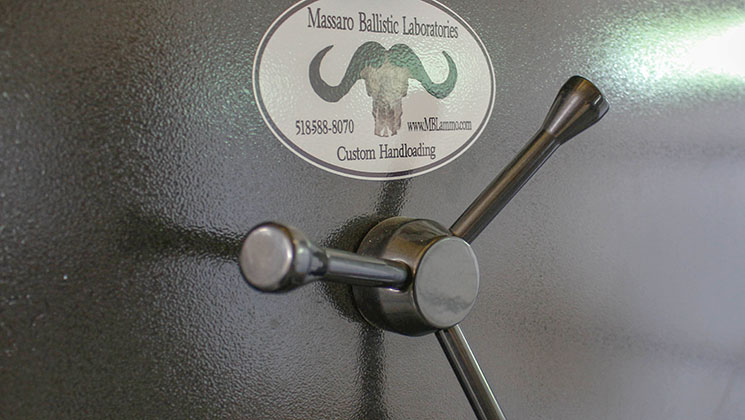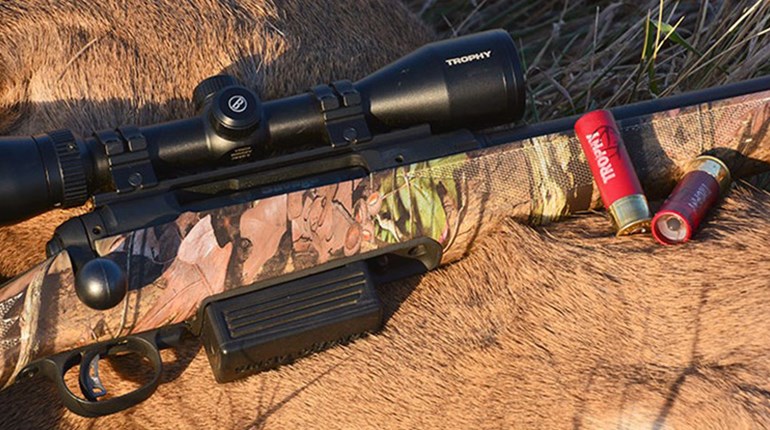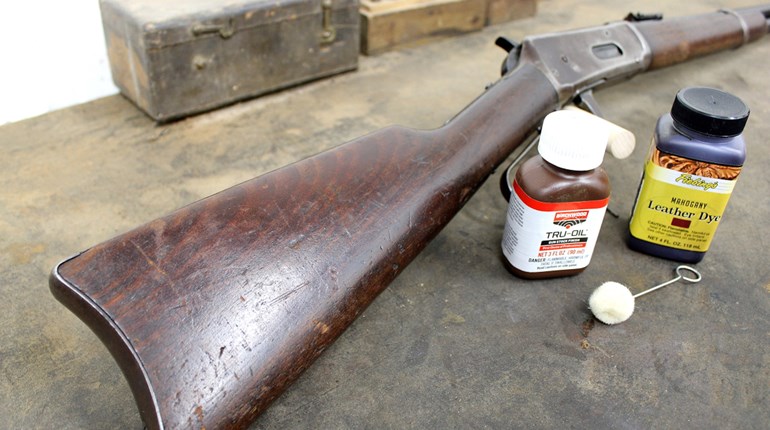
Owning a firearm is a serious responsibility, one I’ve never taken lightly. Gone are the years when Dad would set the deer rifle and rabbit gun into the wooden rack that hung on the wall; we wouldn’t touch them, because we understood what they were all about. However, in this crazy age of mandatory trigger locks, corporate culpability, legal finger-pointing and other common-sense-defying legal situations, a gun safe makes a whole lot of sense. While there are many models, types, shapes and sizes to choose from, there are certain features that I appreciate. Depending on your situation, the amount of firearms you need to store, and the room you have to store them, certain features may appeal to you. Let’s take a look at some of the choices available.
 A gun safe can be a couple of different things. It can be, simply put, a means of securing your firearms and ammunition so that they don’t fall into the wrong hands. Or, it can be a means of disaster insurance, protecting not only your firearms, but other valuables and irreplaceable items from fire. I like to note this here, with no intended offense to the safe manufacturing companies: I’ve never owned or seen a safe that will actually hold the amount of firearms that the manufacturer has indicated. I’ve tried to stuff them in the safe like rakes in a shed and rearranged them in a Tetris-like fashion, but I can’t get to the number they indicate. So, my first piece of advice is to "overbuy." While the majority of my firearms are common-place—lacking any fancy engraving or marbled walnut—I do have a handful that might be deemed as pretty, and the last thing I want is to have my investment scratched or dinged because of cramped quarters. So, I personally like to keep things rather loose inside the safe.
A gun safe can be a couple of different things. It can be, simply put, a means of securing your firearms and ammunition so that they don’t fall into the wrong hands. Or, it can be a means of disaster insurance, protecting not only your firearms, but other valuables and irreplaceable items from fire. I like to note this here, with no intended offense to the safe manufacturing companies: I’ve never owned or seen a safe that will actually hold the amount of firearms that the manufacturer has indicated. I’ve tried to stuff them in the safe like rakes in a shed and rearranged them in a Tetris-like fashion, but I can’t get to the number they indicate. So, my first piece of advice is to "overbuy." While the majority of my firearms are common-place—lacking any fancy engraving or marbled walnut—I do have a handful that might be deemed as pretty, and the last thing I want is to have my investment scratched or dinged because of cramped quarters. So, I personally like to keep things rather loose inside the safe.
The majority of my firearms are long guns, so when I went shopping I wanted a configuration that would center around them, with the capability of neatly storing my handguns as well, in addition to some of my valuables (there are far less of these than I’d prefer). I was in the market for a safe that would hold right around 40 long guns, and was settled upon a certain model, when a friend called me to deliver the news that he’d been transferred from New York to Georgia for a job opportunity. He had a Timber Ridge 64-gun safe, purchased from Gander Mountain, and due to the immense size, he wanted to sell it rather than try and haul it down the East Coast. Long story short, I became the new owner of a safe that doubled as a small office—and I’m glad I did. The over-sized (at least in comparison to what I thought I’d need) body allows me to store my firearms in a "roomy" manner; the opportunity for dings or scratches is, at least, minimized.
My own safe features a manual, dial combination lock, with a three number combination, as well as a key lock to secure the mechanism. I’ve since looked at some of the models with the electronic locks, and while their design seems to be sound, I am dear friends with Mr. Murphy and his close-following Law, so I tend to try to keep things simple. I can report that in three years of ownership, I’ve had no malfunctions whatsoever with the locking mechanism. The Timber Ridge series is manufactured by Liberty Safe, and they have a great reputation for customer service.
The choice of lock mechanism is ultimately up to you, as I feel that both will work, but I’d highly suggest that you take a good, long look at the fire rating of the safe you're interested in. Each safe will indicate at what temperature, and for what length of time, the contents will be safe. Please keep in mind that while paper—as Mr. Bradbury so eloquently related—will ignite at 451˚F, many of the synthetic stocks will melt at temperatures around 250˚F, and the steel barrel of a firearm will act as a heat-sink, trapping and holding the heat of a fire. As it stands, there is no standardized rating system for a fire-proof gun safe, so the consumer will have to do his or her best to interpret the data, so as to best serve their needs.
Most of the gun safes lock up with round, protruding steel rods, much like a bank vault. You’ll want a sturdy, tamper-proof locking mechanism, so that thieves can’t break in easily. Many gun safes come pre-drilled with holes in the floor, for bolting the safe to the floor. This makes a lot of sense, as I’ve known folks who have been robbed, and because the thieves couldn’t break into the safe, they simply stole the entire affair. Bolt that thing to the floor and you’ll more than likely find it where you left it.
You also need to be cognizant of the weight of your safe; some of the larger models can easily weigh in excess of 1,000 pounds, and that can test the strength of your floor joists. If I had to wager, I’d say the model I own weighed more like 1,500 pounds, and the house simply couldn’t handle it, so it resides in my shop.
And this brings me to the last tip: be aware of the humidity conditions in your area. Here in the Northeast, where it is very damp throughout most of the year, my safe in the shop is challenged by moisture, which leads to rust, and I hate rust. I use a dehumidifier made under the Remington brand, which uses water-collecting beads to draw the moisture away from my firearms. The beads are blue when dry, and change to a pale-pink color when saturated. You can then plug the apparatus into a wall socket, to dry it out again. This handy little tool keeps things dry inside, and it’s simple enough to maintain. Other safes use light bulbs to keep things dry, and having light inside the safe is a nice feature. I’ve rigged up several different light sources, but I truly wish my safe had a permanent, fixed lighting system.
My own safe has a rack system for holding my rifles, but there are other systems. Some of the nicer Pendleton safes have a Lazy-Susan style rotating rack for easy removal or addition of your firearm. The Pendleton’s have some of the neatest graphics on the market—really classy stuff.
Choosing a gun safe is one of those things that need to be well researched, but I feel that you ultimately need to see and feel the safe before you buy it; a blind purchase from the Internet can easily result in disappointment. Choose wisely, and make sure you have some strong friends on hand for the move!
Want to read more from Philip Massaro? Check out the stories below:
• Best Gun Cases for the Traveling Hunter
• An Ode to the .30-06 Springfield
• Top 5 Boutique Bullet Companies
• Top 5 .22 Long Rifle Loads
• 5 Reasons Round-Nose Bullets Are Still Cool
• Top 5 Dangerous Game Loads
• Top 5 Turkey Loads
• 5 Rifle Cartridges That Need to Make a Comeback
• Top 5 Safari Calibers
• 5 New Year's Resolutions for Hunters
• What Your Favorite Rifle Cartridge Says About You
• America's Most Wanted Cartridges
• America's Strangest Game Laws
• What Your Favorite Rifle Cartridge Says About You, Part II
• Top 5 Overrated Rifle Cartridges
• Top 5 Underrated Rifle Cartridges
• 5 Cartridges You Might Not Know About
• Top 5 Wildcat Cartridges
• An Ode to the Ruger Mini-14
• Top 5 Hog Loads
• Top 5 Deer Bullets
• Why .30-30 Winchester Will Never Die






































